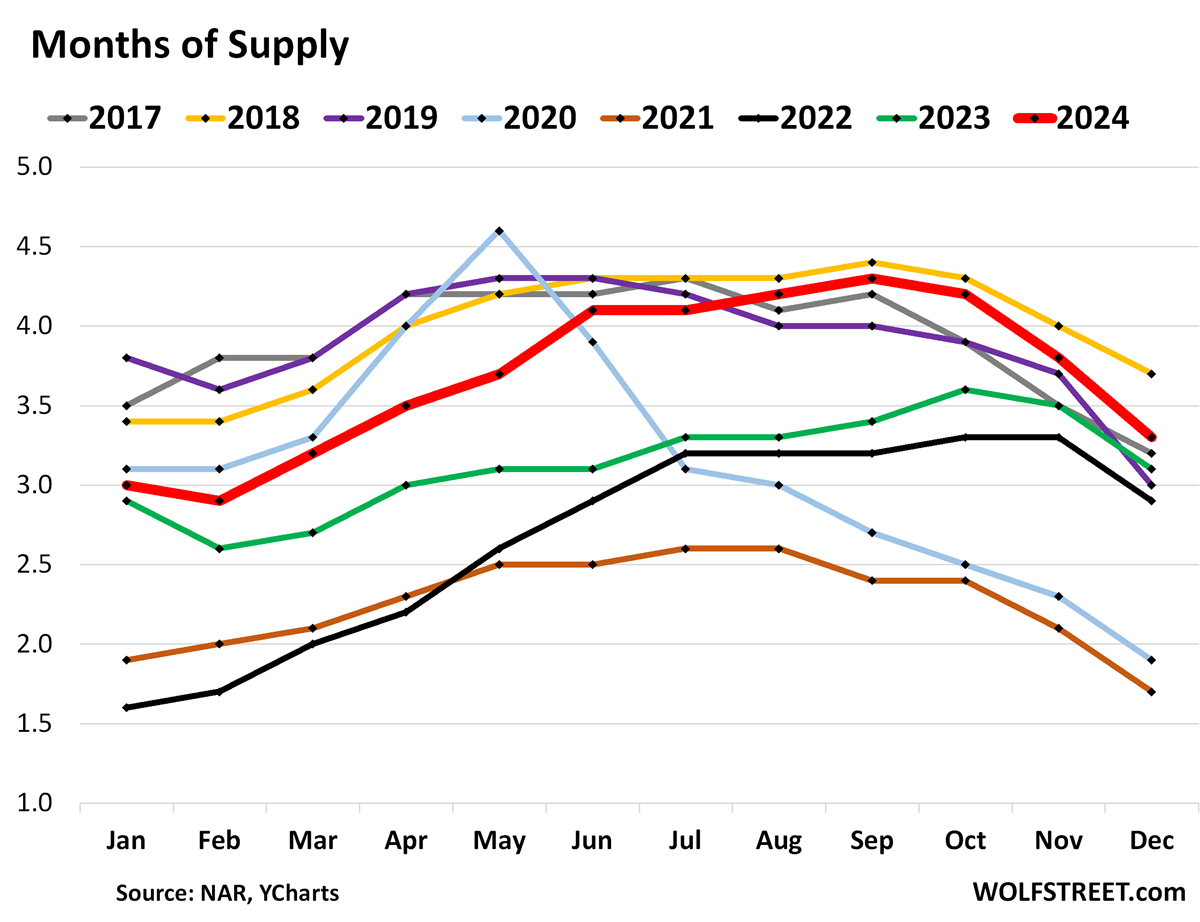Energy News Beat
Weekly Daily Standup Top Stories
U.S. Shale’s Capital Discipline Outweighs Trump’s Pro-Growth Rhetoric
US shale producers are focused on capital discipline and shareholder returns, limiting the impact of Trump’s pro-oil policies. Increased Permian rig activity is unlikely to significantly boost oil production due to inventory depletion and efficiency […]
China and India Scramble for Crude as Sanctioned Russian Tankers Turn Back
By Julian Lee, Serene Cheong and Alex Longley (Bloomberg) — The most aggressive Western sanctions imposed on Russia’s oil sector since Moscow’s 2022 invasion of Ukraine threaten to disrupt global supply as buyers — led by China […]
UK Nuclear Power Ambitions Hampered by Delays and Soaring Costs
The construction of Hinkley Point C and Sizewell C nuclear power plants is facing significant delays and cost overruns, jeopardizing the UK’s energy security. Sellafield Ltd’s cybersecurity failings have raised concerns about the safety and […]
EU makes admission about Russian gas
A spokesperson has acknowledged that the sanctioned country’s energy is still flowing into the bloc Russian energy continues to flow to the EU despite the bloc’s commitment to eliminating its dependence on it, a European […]
Trump lifts pause on non-FTA LNG export approvals
Trump issued the executive order, which was widely expected, just hours after officially taking over his second four-year term as the president. The move is part of a series of new energy actions as part […]
Trump unveils $500 billion AI ‘Stargate’ project
The initiative will ensure US dominance and create 100,000 jobs, the president claimed US President Donald Trump has announced the launch of Stargate, a new initiative set to invest up to $500 billion in artificial […]
Highlights of the Podcast
00:00 – Intro
01.03 – U.S. Shale’s Capital Discipline Outweighs Trump’s Pro-Growth Rhetoric
04:45 – China and India Scramble for Crude as Sanctioned Russian Tankers Turn Back
07:27 – UK Nuclear Power Ambitions Hampered by Delays and Soaring Costs
05:87 – EU makes admission about Russian gas
10:46 – IEA says global gas markets set to remain tight in 2025
13:30 -Trump lifts pause on non-FTA LNG export approvals
15:25 – Trump unveils $500 billion AI ‘Stargate’ project
19:27 – Outro
FollowStuart On LinkedIn and Twitter
Follow Michael On LinkedIn and Twitter
– Get in Contact With The Show –
Video Transcription edited for grammar. We disavow any errors unless they make us look better or smarter
Michael Tanner: [00:00:10] What’s going on, everybody? Welcome into a special Saturday, January 25th, 2025, edition of the Daily Energy News. Beat Stand up. It man, it was a long, great week. We had a lot of stories. Trump taking office, all what’s going on with, you know, with him. You know, we’ve got, you know, all of the different actions that he’s taking. Will things remain to be seen? Oil prices were up. So it’s been absolutely busy week. I held down two solo shows, so I apologize in advance for that. But I’m going to go ahead. We got the team coming up, some of our best segments from the week. So I’m going to go ahead and turn it over that quickly, though, guys. As always, energy news beat. Hit the description below. Sign up for the substack. Invest in oil.energy newsbeat.com if you want to get access to better oil deals. But other than that guys, we’re going to let you get out of here. Start your week. Thank you for making us part of your weekend and we will be back in the chair Monday morning. [00:01:02][51.9]
Stuart Turley: [00:01:03] Let’s start with drill, baby, drill, drill. And fiscally responsible. Excuse me. I mean, when US shale capital discipline outweighs Trump’s pro growth rhetoric, it’s an interesting article, and this actually comes from Rystad Energy. Our folks over there rystad, there are three main bullet points. My goal and then there’s some details in here, U.S. shale producers are focused on capital discipline. Really what this is, we’ve been saying this for quite a while and shareholder returns increase. Permian rig activity is unlikely due to significantly boost production due to inventory depletion and efficiency concerns. I believe this great man has been talking about that. I believe his name is Michael Tenner. Yes. Thank you, sir. And then the U.S. is already on track to meet a Besson’s 333 hydrocarbon production target without policy changes driven by Engels and Gas. I’ll tell you how the growth could come in at the expense of the capital spending more than 11 billion. While Permian reinvestment rates are also expected to edge higher during 9%. Point is pretty interesting for I love the folks over there Rystad. They normally have some good stuff. [00:02:16][73.5]
Michael Tanner: [00:02:17] No, they have great stuff. I love this this look because again, I think it piggybacks off of what we’ve been saying here on the podcast. Stu That yeah, I think drill, baby, drill. Wow. That’s great rhetoric. And I think, you know, corporate executives, as this article talks about, are going to be encouraged by this. It’s not necessarily going to all of a sudden know, well, we got to pick up three rigs now nobody’s sitting there like that. You know, they specifically mentioned shale 4.0, which, you know, really is a combination of of the learnings from 3.0, what went on in shale 3.0, increase production at all costs, show production growth, show inventory, not really what’s going on now. It’s all capital discipline, it’s all consolidation. It’s how do we squeeze the most amount of profit out of what theoretically is a declining inventory count, not necessarily declining? Well, count not a play on words there, but a diminishing, you know, economic inventory at these prices. So it’s going to be really interesting. I mean, this article does point out that, you know, Trump’s Treasury secretary, Scott Besser, has floated an increase of 3 million barrels of oil equivalent per day as part of his broader 333 economic plan. You know, again, whether that’s BOE or barrels of oil, who knows? As always, you know, there is a BOE. It’s a sleight of hand. If someone’s thrown BOE at you, you should ask, well, how? Give me the break down. What’s your gas versus oil? Because you’re sometimes using, you know, it’s a 6 to 1 ratio to convert gas to oil equivalent, but it’s about a 20 to 1 economic conversion. And so if someone’s giving you BOE and they’re doing it in 6 to 1, it’s look over here, not over here, because it can be a sleight of hand. So it’ll be interesting to see what he says underneath. But again, I think what this does is specifically underscoring and, you know, things that we’ve been talking about in terms of it’s a Trump is not going to be able to just wave a wand and increase production because it wasn’t like there was production being held back in the previous administration. For all the power, all the knocks that Joe Biden gets, one of them can’t be all he’s holding down. Oil production actually increased under his administration, whether he likes it or not. [00:04:29][132.0]
Stuart Turley: [00:04:29] Well, the the malarkey that they did under the Treasury and we’ll talk about her and her haircut. I mean, we’ll talk about her here in a second. And but the stuff that they just put out will cost a lot of people, a lot of money and all this stuff. China and India scramble for crude is sanctioned Russian tankers turn back. This one is very interesting. Here’s a quote out of the article. It is even likelier there will be a sustained market disruption. Fishman added. We could see a meaningful drop in Russian exports. I think that it’s going to be ended fairly soon. So I don’t think this disruption in fact, I think. We’re actually going to see sanctions being released on Moscow. Because when you take a look at China and India, listen to this have bought 81% of Russian seaborne crude exports since the invasion of Ukraine. Now, Michael, here’s where it gets funny. India and China’s refinery capacity has grown substantially. The U.S. has shrunk. So guess who’s selling Russian refined products? India and China. Guess who they’re selling them to? The U.S. and the EU. This is a gigantic can of worms. [00:05:47][77.9]
Michael Tanner: [00:05:47] It really is. Talk about the Dark fleet. This is going to get super crazy. I think a lot of this is what you’re seeing reflected in kind of the current weekly bump in prices. You know, I mean, we saw early in the week prices were above $80. We’re now kind of sit in that 77, 78 range. But you’re talking about 600 or 161 tankers are involved in about basically 2000 shipments have been sanctioned since this the old invasion. But now it’s it’s continuing to match Indian. You know, India and China are going to get and are already seeing effects of this being turned away. You know, it’s about 1.4 million barrels of crude oil per day, according to an estimate from the some London based E.A. Gibson Ship Brokers Limited. This equates about half of Russian seaboard crude exports, which is pretty unbelievable. The Maguire Group estimates that this is going to be even greater at 2.15 million barrels per day of global exports, which obviously is could drive up prices. So this is a big old hairy mess. I don’t know what’s going to happen here. What’s the read on the the the Trump admin stance on this? They’re going to keep these sanctions in place. What are they going to do? [00:06:58][70.7]
Stuart Turley: [00:06:59] I think it’s going to be dependent on the negotiations on ending the war. It is so important for President Trump to end the Ukraine war immediately. And I think that sanctions are going to ease everybody saying, sanctions are going to stay in place for a long time. And the Democrats are quite honestly putting some landmines out there. They are despicable players in this whole process. But I believe that Trump is going to meet with Putin sooner than later. So I think it’s going to be great. UK is in trouble. Nuclear power Ambitions Hampered by delays and soaring costs. The construction of Hinkley Point C in size will see nuclear power plant is facing significant delays and cost overruns, jeopardizing the UK’s energy security. This is not just the only thing doing the UK energy security. It’s called all of their med green energy policies. They’re not doing all forms of energy. They are absolutely horrific in their energy policies. They’re following the German model. The UK government and EDF currently plan to fund 40% of Sizewell C, which is expected to power as many as 6 million homes once operational again. The problem is they let this go too long and they need the baseload trying to put the renewable energy in there and now they don’t have the natural gas coming out of it. And then you have natural gas shortages in other areas. So energy security needs to be thought out more like the Saudi Arabia Arabia folks, when you take a look at energy policies over a ten, 20 year plan, you cannot do what the United States has been live, just live through four years of bad energy policies and then trying to do it. Don’t do what the U.S. and the UK you’re doing. [00:08:56][117.5]
Stuart Turley: [00:08:57] The EU makes admission about Russian gas spokesperson is acknowledge the sanctioned country energy is still flowing into the block. Russian energy continues to flow to the EU. Particularly glass is still present in the EU. The EEC spokesperson for Climate Action and Energy and US. Anna Kizer. I’m sorry, I’m going to butcher your name, it, Pocan told a briefing on Monday. She noted the commission plans to issue a road map in late February or mid-March aimed at completely ending Russian energy imports. Here’s where it is absolutely going to be a little tricky. Germany Chancellor Schulze has lost the vote of confidence and now they’re having a runoff or another election in Germany. And so what you’re going to see is his opponent now is calling for Russia to keep Russian natural gas. So Germany has totally been industrial advised because they cannot get enough natural gas. I just had an interview with Steve Reese, who is, in my opinion, one of the foremost knowledgeable men in the United. States about natural gas, the auditing, and he has talked to Harold Hamm. This this podcast is going to come out and it’s absolutely phenomenal. He’s also talked to Toby Rice about things. They’ve got a cradle to grave solution where they are going to be supplying LNG to the German markets. And and so that he is but is still a lot more costly in order to get it there. But it is secure and he did make that point home big with me. So you’ve got to have energy security if you’re going to have businesses and industrialization. [00:10:44][107.1]
Michael Tanner: [00:10:46] IEA says global gas market set to remain tight in 2025. I mean, this is super interesting. This is specifically focused on natural gas, which, again, you know, if you’re concerned about what’s going on in oil, it looks like supply might quite outpace demand. What they’re saying on the oil side is the demand may not be there. But with this focus specifically on natural gas, the IEA does these kind of quarterly gas market updates. Their quote was that the markets have, quote, moved towards a gradual rebalancing last year after the supply shock that followed the Russia full scale invasion of Ukraine in February 2022. Again, pointing out that this report is talking about global natural gas markets, not necessarily the U.S. gas markets, which do remain slightly overbalance from the standpoint we get a lot of natural gas sitting on the sideline being flared. We’re talking specifically about the global gas balance. So basically, the IEA is talking about that. You know, they the reason why they’re saying it’s tightened a little bit AK that the supply is now getting back in balance with demand is mainly due to Asia. You know, in terms of again, from the demand side, Asia’s, you know, their demand, their global gas demand rose by about 2.8 percentage points or about 150,000,000,000m³. I mean, 2024, which was above the 2% growth rate that they saw somewhere between 2010 and 2020. We also saw below average growth in liquid LNG output, which really kept supply tight. And there was a bunch of kind of wild weather events that happened. You know, this report is basically saying that the similar dynamics are expected to persist in 2025 as this new export capacity gets going. A lot of that’s coming from the U.S., which we’ll cover in the next segment. But also Qatar is coming online both over the course of next year and the second half of the decade. They also note that geopolitical tensions have kind of continued to kind of push volatility in gas markets there, though, the halt of the Russian piped gas transit via Ukraine on January 1st, 2025, does not pose an immediate security risk for the European Union. It could increase European LNG import requirements and further tighten global market fundamentals in 2025. We know what’s going on with Moldova and all that stuff. The quote from the IEA, Director of energy Markets and Security. I’m going to butcher this name Kosuke Summer Dorie quote Gas market fundamentals have improved over the past year, but for now we are still seeing significant tightness due to rising demand and muted growth in LNG capacity. Heightened geopolitical uncertainty adds to the risk. He goes on to say While international cooperation on gas supply security has expanded since the region energy crisis began, greater efforts are needed from responsible producers and consumers who should strengthen their collective efforts to reinforce architecture for safe and secure global gas supplies. So, you know, global gas markets are going to continue to stay tight. [00:13:29][163.1]
Michael Tanner: [00:13:30] First, a full day in office. Trump lifts pause on not FDA LNG export Approvals. This was an executive order which was widely expected to basically get our LNG export terminals going, specifically according to the order of the Energy Secretary. Great friend of the show, Chris Wray, is directed to restart reviews of applications for approvals of LNG projects, quote, expeditiously as possible, consistent with applicable law. The order goes on to say, quote, In assessing the public interest to be advanced in any particular application, the Secretary of Energy shall consider the economic and employment impacts to the United States an impact of security of to its allies and partners that would result from granting the application. They’re also going to look at the Alaskan LNG potential, which which includes all the permitting and infrastructure to get pipelines and all that done. You know, and this why this bleeds into what the IEA is talking about is the US has an ability to help wean Europe off its Russia supply, which means the security risk that everybody scared about Russia. You can get off Russian gas and bring yourself more energy security If the United States would get its act together and we would start building these things. And that’s exactly what Trump and Chris Right. Are going to be doing. It’s great that we have them in office. We remember that in January of 2024, the Biden administration paused pending decision on exports of LNG to non-OECD countries until the deal. We can update its underlying analysis for authorizations. Basically, they released a report last month, but it didn’t really say anything. There are several projects that will benefit from this. These include Cambridge’s Commonwealth LNG project in Cameron, Louisiana, and Venture Global’s LNG CP2 project in Louisiana. Also the Sabine Pass Stage five expansion by Cheniere Energy and Energy Transfer’s Lake Charles LNG export Patel facility and Sempra. Their Port Arthur LNG export will also benefit lots of great benefits of here in the LNG space. Good for you. [00:15:24][114.0]
Michael Tanner: [00:15:25] Trump unveils a $500 billion A.I. Stargate program. This is, as I said, in the open. On one level, great. On one level, spooky, basically with Larry Ellison, Sam Altman and Marsha Schiro, signed by his side. US President Donald Trump announced the launch of Stargate, which is a new initiative set up. That is, according to reports, going to invest up to $500 billion in artificial intelligence, intelligence infrastructure. You know, basically the three primary caught corporate partners, SoftBank leading the financing side open, A.I. leaning the operational side, and Oracle, which is kind of leading the data center effort, have pledged $100 billion in investment. And with an additional $400 billion set to be attracted over the next four years. The quote from President Trump is that this is a monumental undertaking and a resounding declaration of confidence in American potential under a new president. You know, they already you know, Larry Ellison said in kind of an initial kick out meeting that they already have one of these data centers, these Stargate data centers under construction here in Texas. There will be up to 20 of them, which each spend basically about half 1,000,000ft² are planned to support the huge amount of infrastructure that’s needed across these high computational AI systems. Trump went ahead and said he estimated that these would create 100,000 jobs across the United States. Sam Altman, who’s the CEO of Open Air or Closed? I also named ARM Microsoft and Indivior as key initial technology partners. You know, this was dropped actually back in 2023. The news website Information did report that Microsoft and Open Air were collaborating on a supercomputer known as Stargate, which was estimated to cost about $100 Million. It’s not quite clear, per se whether or not that project is connected to the new Stargate initiative that was announced today. You know, I think one, I think it’s fascinating. And then the part where I think this connects into energy is where one obviously AI in these huge supercomputers need power. And eventually you hook hooking up to a wind farm can hooked up. This is a solar farm. You’re either going to have to pipe in natural gas or start building nuclear facilities. And my guess is because Larry Ellison came out and said that there’s already one of these in construction in the great state of Texas. My guess is that they’re going the natural gas route. So I think that’s that’s you know, what this means for energy is this could become an interesting off grid solution for natural gas companies. And it’ll be interesting to see exactly where this is located, because if you can now all of a sudden, almost like a Bitcoin mine, take your gas off grid and instead of trucking it to a, you know, energy transfer or, you know, who’s going to send it on down to their processing or fractionation facility, you know, you’re now able to take the gas directly out of the pipeline or directly from these oil and get these upstream firms and power your, you know, power your your data center. It could be a very, very interesting shift of the model when it comes to what we would consider on versus off grid power generation. I had a great interview actually with Eric Rice. He’s the president over at Sovereign Capital. And we talked a lot about on grid off grid type generation when it comes to specifically Bitcoin mining, but this type of stuff as well. I mean, you know, if you’re able to, again, take this gas that would otherwise be sold down a pipeline or flared off and use it to power these data centers, you know, you’re going to see this is truly where when companies like OECD talk about the artificial intelligence boom as it comes as it pertains to the natural gas market, this is things they’re talking about specifically. So again, I think it remains to be seen how they’ll power this. But, you know, this is this is a big endeavor. And, you know, $500 billion is nothing to sneeze at it. It’ll be interesting to see. We did see Elon Musk in a in a tweet war with Sam Altman basically say, hey, you don’t even have less than 10% of this $100 billion raised. And and Sam kind of quipped back at him. So again, it’ll be interesting to see how this works. And we know Elon Musk is no fan of open AI or he calls it closed AI. So we will see what happens. [00:15:25][0.0][907.8]
The post Week Recap: U.S. Shale Steady, Trump’s $500B AI Plan, Tight Gas Markets appeared first on Energy News Beat.



























